If you’re looking for a fun-filled destination to visit in February, look no further than Goa. The state hosts an incredibly lively and exhilarating carnival festival in Goa that is not to be missed. The energy, enthusiasm, and joyous celebrations during the carnival are sure to leave you with unforgettable memories.
Aside from the carnival, Goa is known as a pleasure ground for both national and international travelers. With its stunning beaches, rich colonial architecture, vibrant nightlife, and affordable alcohol, it’s easy to see why. Whether you’re looking to relax on the beach or explore the local culture, Goa has something for everyone.
So why not make your February trip to Goa and experience the unique carnival? You won’t regret it! This beautiful state has lots to offer.
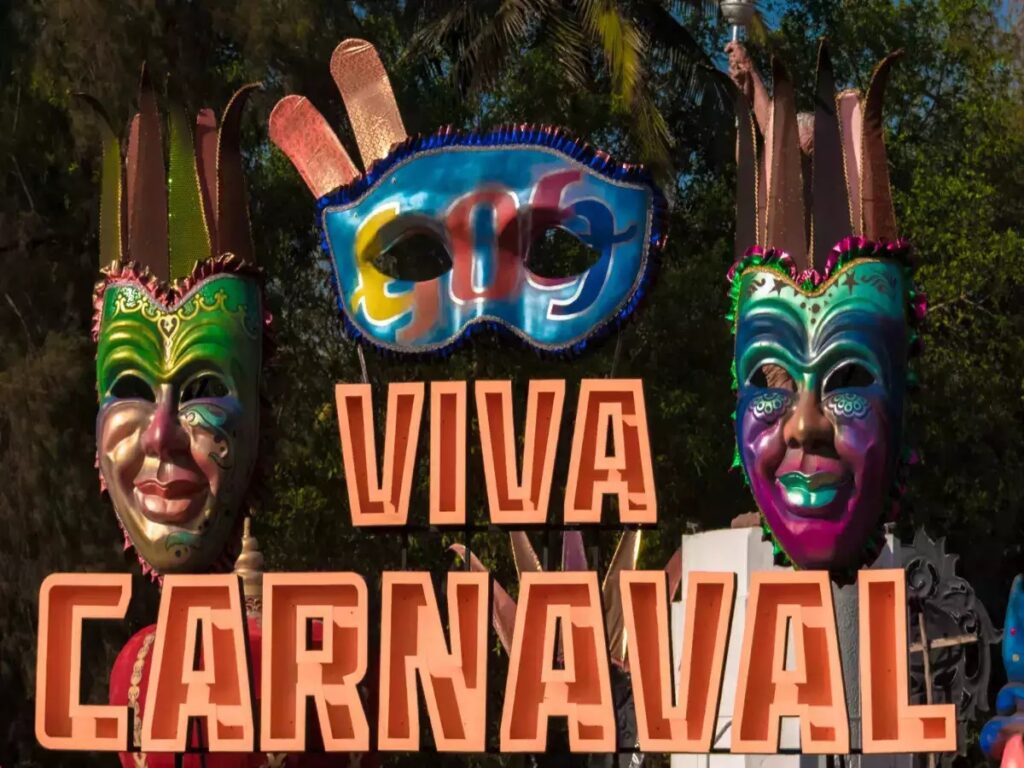
Why Carnival Parades is a must watch in Goa?
Goa – the name of the place alone is enough to invoke enthusiasm, fun, and relaxation topped with ultimate cultural and adventurous inclination. If you are planning for a vacation that is filled with lively and exhilarating experience, let Goa be your next destination. And if it’s happening in February, let Goa Carnival be the icing on the cake.

Goa Carnival takes place every year throughout Goa in the months of February or March. This is entirely for the ones who are craving for some energetic vibes with a dose of a cultural and adventurous blend. After all, Goa is famous for being the favorite for national as well as international tourists for its ultimate positive vibes.
There are elaborate celebrations where you can see cheerful crowds just losing themselves to the madness and vibe of the festivities. It is truly a dance and music extravaganza for the people who have never seen it. There is a parade stuffed with beautiful floats, entertainers and dances at the end of the carnival giving it a grand close every year. To put things in better perspective, let us further throw some light on the history of the carnival.
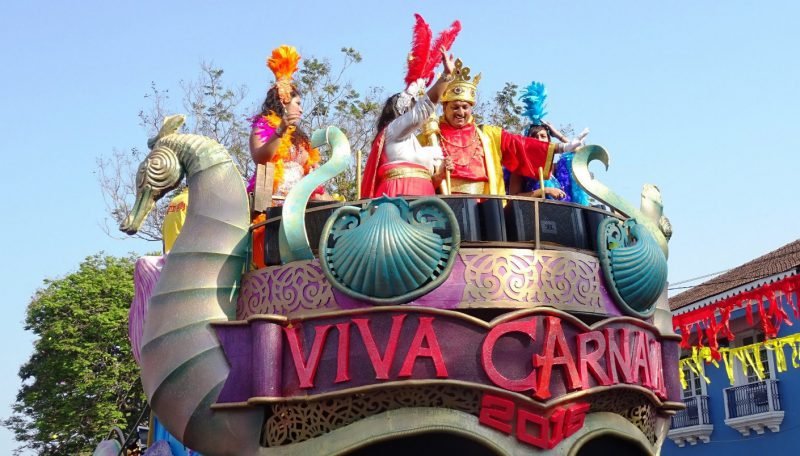
History of Carnival festival
Goa carnival was brought to India by Portuguese during the time they ruled here. Approximately 500 years ago the first every carnival was organized in the state. But it was not the Portuguese originally who had this kind of exuberant riotous celebrations. The culture actually came from ancient Rome and Greece and spread to Spain and Portugal eventually. This quite explains that when Portuguese colonized Goa they wanted their culture to be dominant here and hence this carnival was organized. It had a Portuguese flavor to it earlier but with time the celebrations have taken up the essence of Goan culture. Thus people identify with the festivities and take part in the carnival in crazily large numbers.
What happens at Goa Carnival?
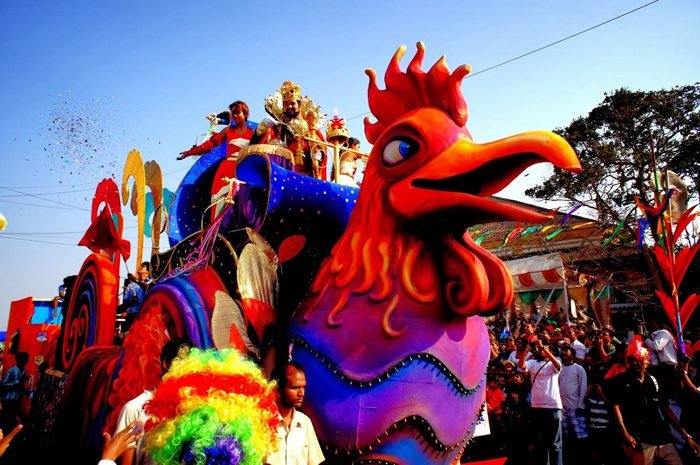
The Goa Carnival got highlighted after the end of Portuguese rule in Goa in the 1960s. It began as a rural celebration and grew to be an urban floats-based parade. Though it is still celebrated in a very traditional way, commercial touchups follows. Hundreds of different cultural doses play a significantly bigger role to make it on a level that pulls international tourists in the majority.
The carnival kicks off on Fat Saturday (Sabado Gordo) and continues till Fat Tuesday (Shrove Tuesday), a day before Ash Wednesday that marks as the first day of the season of Lent.
Entry to Goa Carnival

There are no entry tickets for the carnival and you just have to come and take part in the celebrations. Everyone is invited with open arms to join in and revel in the four days of exhilaration and unmatched exuberance.
Goa Carnival Celebrations
There would be no doubt in your mind by now that Goa Carnival is the most awaited event in the state. You can get this from the fact that preparations start in December to make the carnival a roaring success! Music, dance and entertainment are the shining features of the carnival and along with these, there are plays of a short length which portray the Goan traditions and culture very beautifully.

It is organized before the month of Lent is going to begin when people would have to completely abstain themselves from the consumption of meat. Starting with a grand procession on the Fat Saturday evening, the parade is lead by King Momo who sets out with his entourage of dancers, bands, clowns, acrobats, and other entertainers to spread the message of merrymaking across the state.
The parade moves down through the main street of Panaji, the capital city of Goa to come to rest after some hours of what seems like “endless gaiety”. The festivities end with a red and black dance where women and men dressed in red-colored upper garments and black colored lower garments dance to the beats of the bands in a festooned procession. Ash Wednesday as it is called is the last day of the carnival when the month of Lent begins. One thing to note is that the feasting is a major part of the festivities and hence this is time for the foodies to venture out and taste some of the best cuisines, drinks, and wines here. Pure indulgence, we must say!
Things to do and sights to watch during Carnival in Goa:
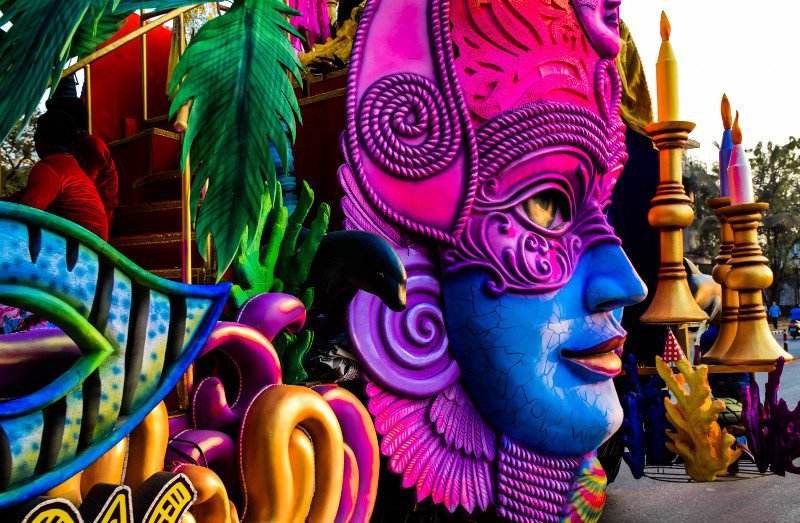
- The Carnival begins on the Fat Saturday evening with a grand procession headed by King Momo.
- Balloons are bobbed up in the air trailed in colorful ribbons to initiate the procession as it starts.
- There are masked parades in different parts of the destination. One can see entertainers, beautiful floats and participants dressed in fun costumes.
- Short gigs and plays performed by the locals to exhibit the Goan culture and their love for fun and enthusiasm.
- Horse-drawn carriages, decorated bullock carts, and beautifully ornamented floats are few of the main highlights of the parade.
- Performers showcase traditional dance performances in gaudy costumes and play electrifying music live in the procession.
- There are sports competitions, floats, and parades that are open to all free of cost.
- Goa, being the hub for good food and great drinks, the carnival extensively exhibits these and more in the 3-days stretch.
- Khell or Fell is the famous one-act folk play where exciting colors are used and Intruzachim Geetam or Fella-Gitam are performed by the walking-singers. These singers walk around and sing accompanied by local musical instruments.
- The rustic drums, called dolkas, are the attractions of the mainspring or director of the play that helps in narration during the act. Likewise, the whistle of the mestri act as a curtain-raiser to the play.
- The carnival ends with the popular color-coordinated dance where the women are dressed in red tops and black skirts. Men are in red shirts and black trousers while dancing in the procession.

Important Tips while attending Carnival in Goa
- Booking hotels and travel tickets well in advance will be of huge benefit. You might get your hands on attractive discounts with early booking. Goa experiences a heavy influx of tourists during the carnival period. To avoid getting caught in the rush hour, it is recommended that you plan and book in advance.
- Take your best clothes with yourself and get ready to rock the carnival. Also don’t wear any shoes that are uncomfortable or may give you a shoe bite. There are a lot of street activities which you may be taking part in. So make sure you are comfortable.
FAQs:
Tourists can plan their visit to Goa during the Carnival season, booking accommodations in advance. Attending the grand parade in Panaji, exploring local events, and immersing themselves in the festive atmosphere are ideal ways to experience the Carnival in Goa.
Locals and tourists actively participate in the Carnival by dressing up in colorful costumes, joining the parades, dancing in the streets, and enjoying the lively atmosphere. Many also attend events, concerts, and cultural activities organized during the Carnival.
The Carnival parade in Goa is a spectacle of vibrant floats, traditional and thematic costumes, live music, dance performances, and street entertainment. It showcases the rich cultural diversity and artistic expressions of the Goan community.
The Carnival in Goa typically occurs in February, preceding the Christian season of Lent.
The Carnival in Goa is a lively and colorful festival that marks the pre-Lenten season, celebrated with grand parades, vibrant costumes, music, dance, and elaborate floats.
During the Shigmoutsav, you can see similar parades like the ones that are part of the Carnival. Read more about Shigmoutsav festival in Goa which takes place in March.
Follow us on Instagram to watch few amazing videos of unseen Goan beauty.


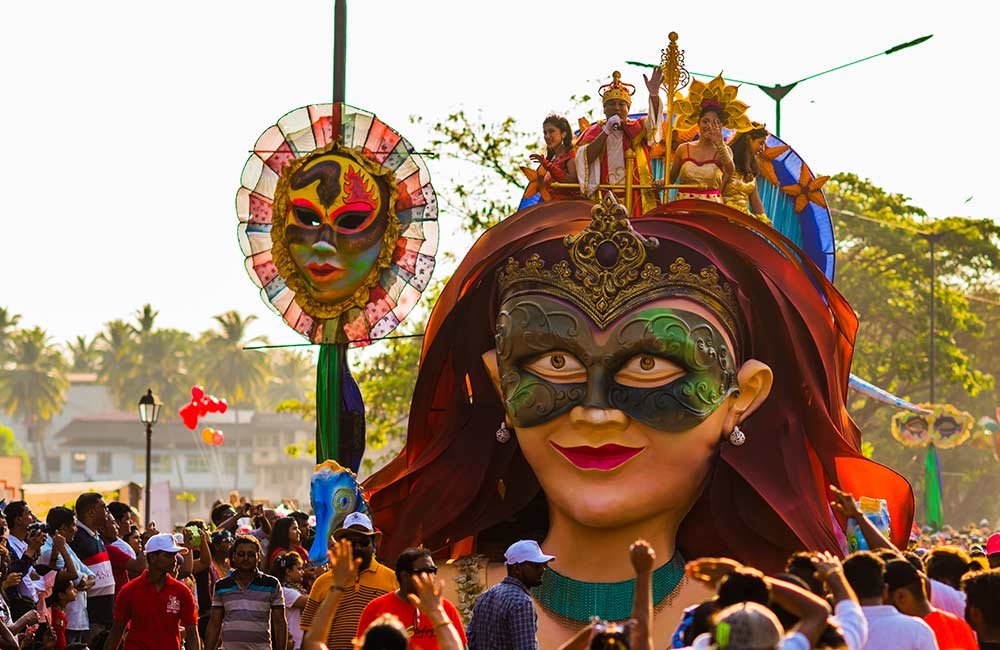



Excellent article on Carnival of Goa. Goa Carnival is a vibrant celebration that encapsulates the rich cultural tapestry of this coastal paradise. Drenched in color and rhythm, it unfolds with lively processions, exuberant street performances, and infectious music that echoes through the palm-lined streets. The festivities, rooted in a blend of Portuguese and Konkani traditions, kick off with the legendary King Momo leading the parade, setting the stage for days of revelry. What sets Goa Carnival apart are its unique specialties—elaborate floats adorned with intricate designs, showcasing Goa’s history and folklore. The streets come alive with masqueraders in elaborate costumes, portraying mythological characters and social themes. The energetic music, predominantly performed on traditional instruments, adds to the carnival’s authenticity. As the sun sets, the festivities seamlessly transition into electrifying dance parties on the beaches, making Goa Carnival an unforgettable fusion of tradition and contemporary celebration.
Thanks Optima Travels!